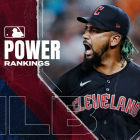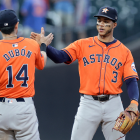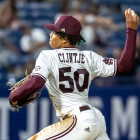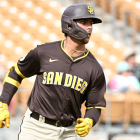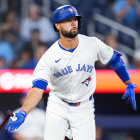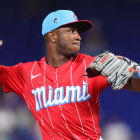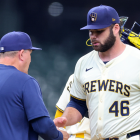As the Boston Red Sox continue discussing Mookie Betts trade scenarios with the Los Angeles Dodgers and the San Diego Padres, the chances of a deal occurring seem to increase. Indeed, Betts opening the season wearing Red Sox colors now feels like a much smaller possibility than it did last week.
While nothing has been agreed upon yet, there are enough hints out there about a potential Betts trade to get a feel for the silhouette. Just check out the latest reports from Andy McCullough of The Athletic and AJ Cassvell of MLB.com if you want to compare the similarities between what the Red Sox seem to be seeking from the Dodgers and the Padres.
As such, we've taken it upon ourselves to highlight four components that seem more likely than not to be part of the trade's final form.
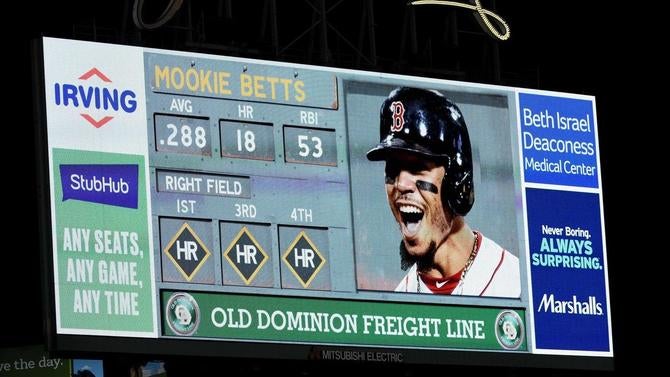
1. Down-tier prospects
Both the Dodgers and Padres have good farm systems, stocked with some of the better prospects in the game. (Check out our Dodgers and Padres prospect lists.) Neither is going to give up their top youngsters, however. That means the Red Sox won't be netting MacKenzie Gore from the Padres, or Gavin Lux or Dustin May from the Dodgers. Instead, the Red Sox will have to settle for second- and third-tier prospects relative to each system.
To be clear, that isn't meant as an insult. The second tiers in the Dodgers' and Padres' systems are quite good. The Red Sox just won't acquire a top-10 universal prospect, in all likelihood.
From the Dodgers, maybe the package is led by catcher Keibert Ruiz or pitchers Tony Gonsolin or Josiah Gray. As for the Padres, that could entail catcher Luis Campusano, pitcher Adrian Morejon, or any number of others. The exact names matter less right now than the sentiment.
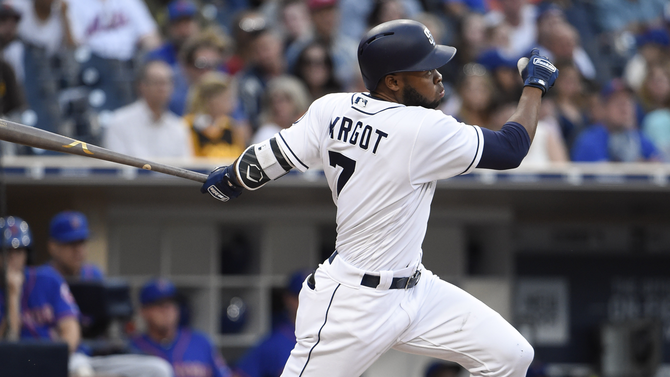
2. Cost-controlled MLB pieces
In addition to having good farm systems, the Dodgers and Padres can each offer the Red Sox some cost-controlled big-league players. The Red Sox figure to require some as part of a trade.
We've covered the Dodgers' array of trade chips already. Outfielder Alex Verdugo and left-hander Julio Urias are their best cost-controlled pieces who seem like realistic trade candidates. The Red Sox could also request someone further along in their career, such as a Joc Pederson or a Chris Taylor, as a means of saving face for the 2020 season. The Padres, in turn, could hand over outfielder Manuel Margot (originally a member of the Red Sox organization), or a young pitcher like Joey Lucchesi or Cal Quantrill.
The Red Sox's reasoning for wanting any of these players would be twofold: 1. They can help at the big-league level right away; and 2. They can later be used in trades of their own.
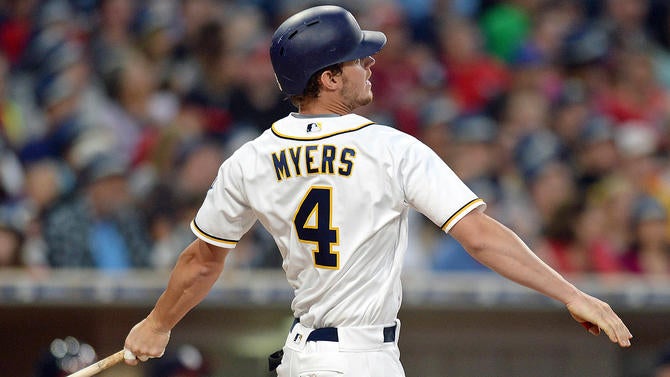
3. Financial ramifications
Money is almost always at the root of big trades. It's no different with Boston and Betts, who is determined to test free agency at season's end in order to receive his market value. It stands to reason the Red Sox could offer Betts what he's worth and re-sign him, but they see it differently.
Trading Betts (and his $27 million salary) affords the Red Sox the chance to duck underneath the luxury-tax threshold, which they're currently projected to finish $20 million over. By fielding a payroll beneath the luxury-tax number, the Red Sox will avoid the trifling overage penalties and "reset" the repeat offender multiplier. In other words, the Red Sox will save some cash.
Boston may leverage those savings, either as part of the Betts trade or in a companion move.
For example, the Red Sox absorb Wil Myers from the Padres. He's owed nearly $70 million over the next three seasons, but his actual take-home exceeds his tax calculated salary, making him a more practical fit in the Red Sox budget. Chaim Bloom could also shed more financial obligations by trading left-hander David Price, who is owed $96 million through 2022.
If Bloom doesn't attach Price to Betts, he could find a separate deal. The Los Angeles Angels are known to have interest in Price. Perhaps the Red Sox and Angels could orchestrate a trade that also involved Justin Upton (owed $72 million over the next three seasons) as a way to keep both teams content with their luxury-tax situations?
Whatever the case, the Red Sox are likely going to be moving money around, through the Betts trade or in the aftermath.
4. Disappointment in Boston
Let's face it, Boston fans are unlikely to be pleased with the return on Betts. Why would they be? He's one of the best players in baseball; a homegrown superstar and former MVP winner who is in his prime and whose well-regarded personality makes him a worthy and compelling face of the franchise. Essentially, Betts is the kind of player the Red Sox should be acquiring, through trades and free agency, not dealing away for a subdued package. Time heals all, but it's okay if Red Sox fans are miffed about trading Betts for a while to come.










